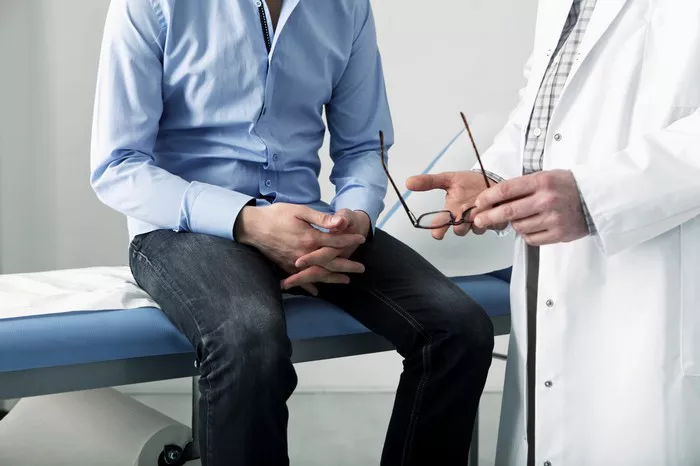Varicocele is a condition that affects many men, especially during their teenage years or early adulthood. It occurs when the veins in the scrotum become enlarged or dilated, much like varicose veins in the legs. While varicoceles often do not cause significant symptoms, they can sometimes lead to discomfort, pain, or fertility issues. Understanding the different stages of varicocele is important in determining the severity of the condition and the appropriate treatment options.
In this article, we will explore the various stages of varicocele, how to identify the stage of your Varicocele condition, and when to seek medical advice. We will also discuss how a doctor diagnoses and evaluates the severity of varicoceles to guide treatment decisions.
What Is Varicocele?
Before delving into the stages of varicocele, it’s important to understand what this condition involves. A varicocele occurs when the veins in the scrotum become enlarged. These veins are part of the pampiniform plexus, which helps to regulate the temperature of the testicles by draining blood from them. When the valves in these veins fail to function properly, blood can pool in the veins, causing them to become swollen and dilated.
Most varicoceles occur on the left side of the scrotum, but they can sometimes affect both sides or just the right side. In many cases, varicoceles are asymptomatic, meaning they don’t cause noticeable symptoms. However, some men may experience pain, swelling, or changes in the appearance of the scrotum. A varicocele may also affect fertility by raising the temperature of the testicles and impairing sperm production.
Understanding the Stages of Varicocele
Varicoceles are classified into different stages based on their size and severity. These stages help doctors determine the appropriate treatment and assess the potential impact on fertility. The stages are usually described as I, II, and III, with each stage representing an increasing degree of enlargement of the veins. The classification is based on physical examination findings and, in some cases, imaging tests.
Stage I: Mild Varicocele
In the first stage, a varicocele is considered mild and is often not noticeable to the individual. A varicocele at this stage may not cause any symptoms, and the veins are typically small. Stage I varicoceles are usually only detected during a physical examination or imaging tests. The veins may feel slightly enlarged but are not easily visible, and there is no significant swelling of the scrotum.
Although this stage of varicocele is usually not painful, some men may experience a slight feeling of heaviness or discomfort, especially after prolonged standing or physical activity. If a varicocele is found at this stage, a doctor will typically monitor the condition over time to check for any progression or symptoms.
Stage II: Moderate Varicocele
A stage II varicocele is moderate in size and may be visible or palpable during a physical examination. At this stage, the veins are more prominent and may cause noticeable swelling or asymmetry in the scrotum. The condition may be more noticeable when the individual is standing, and the veins may be felt as a soft, squishy lump.
In terms of symptoms, men with stage II varicoceles may experience dull pain, discomfort, or a feeling of heaviness in the scrotum, especially after prolonged periods of standing or physical activity. The discomfort may subside when lying down. In some cases, men may also experience infertility issues, as the enlarged veins can raise the temperature in the testicles, affecting sperm production.
If a varicocele is diagnosed at this stage, the doctor may recommend treatment options such as observation, lifestyle changes, or medical interventions. Surgery may be considered if the varicocele is causing significant pain or infertility concerns.
Stage III: Severe Varicocele
A stage III varicocele is considered severe and is the most advanced stage of the condition. At this stage, the veins are significantly enlarged and may be easily visible or palpable without the need for a physical exam. The scrotum may appear swollen, and the veins may feel like a mass or a bag of worms under the skin. The enlargement is often asymmetrical, with one side of the scrotum looking noticeably larger than the other.
In addition to the physical changes, men with stage III varicoceles often experience chronic pain, discomfort, and a constant feeling of heaviness in the scrotum. This pain may be sharp, throbbing, or dull, and it is typically worsened by standing, physical exertion, or heat. In some cases, the pain can be debilitating and interfere with daily activities.
Stage III varicoceles are also more likely to cause infertility. The increased pressure and heat in the testicles can severely affect sperm production and quality, leading to male infertility. For men with stage III varicoceles who are trying to conceive, treatment is often necessary to address the condition and improve fertility.
How Is the Stage of Varicocele Determined?
The stage of a varicocele is typically determined through a combination of physical examination and diagnostic tests. During the physical exam, a doctor will carefully palpate the scrotum to assess the size and texture of the veins. The doctor will also check for any signs of swelling, tenderness, or asymmetry in the scrotum. The stage of the varicocele is based on the doctor’s findings during this examination.
In addition to the physical exam, imaging tests such as scrotal ultrasound may be used to evaluate the size of the varicocele and assess the blood flow in the affected veins. Ultrasound is a non-invasive test that uses sound waves to create detailed images of the scrotum and the veins. It is a useful tool for detecting varicoceles that may not be visible on physical examination.
For men with fertility concerns or more severe symptoms, additional tests may be ordered to assess sperm count, sperm quality, and overall fertility. Semen analysis is often used to evaluate sperm count, motility, and morphology, which can help determine if the varicocele is affecting fertility.
When to Seek Treatment for Varicocele?
While many varicoceles are asymptomatic and do not require treatment, some men may experience symptoms such as pain, discomfort, or fertility issues. The decision to seek treatment depends on the severity of the condition and its impact on the individual’s quality of life.
Mild Varicocele (Stage I)
If you have a mild varicocele and are not experiencing any symptoms, your doctor may recommend monitoring the condition over time. Regular check-ups and ultrasounds can help track any changes in the size of the varicocele. If symptoms develop or fertility concerns arise, treatment options can be discussed.
Moderate Varicocele (Stage II)
If you have a moderate varicocele and experience discomfort, pain, or fertility issues, your doctor may recommend treatments such as lifestyle changes, scrotal support, or medications to manage pain. In some cases, surgery may be necessary to prevent further complications.
Severe Varicocele (Stage III)
For those with a severe varicocele, treatment is usually recommended to relieve pain, improve fertility, and prevent complications. Surgery is the most common treatment for severe varicoceles, and it can help to reduce vein size and improve sperm production.
Conclusion
Varicoceles are classified into three stages based on the size of the veins and the severity of symptoms. Stage I varicoceles are mild and often asymptomatic, while stage II varicoceles are moderate and may cause discomfort or fertility issues. Stage III varicoceles are severe and often cause chronic pain and significant fertility problems.
If you suspect that you have a varicocele, it is important to consult with a healthcare provider for a proper diagnosis and evaluation. The stage of the varicocele will help guide treatment decisions and determine whether surgical intervention is necessary. With proper care and management, varicocele symptoms can be alleviated, and fertility can be preserved.
Related topics:
Can Varicocele Be Cured by Yoga?
























